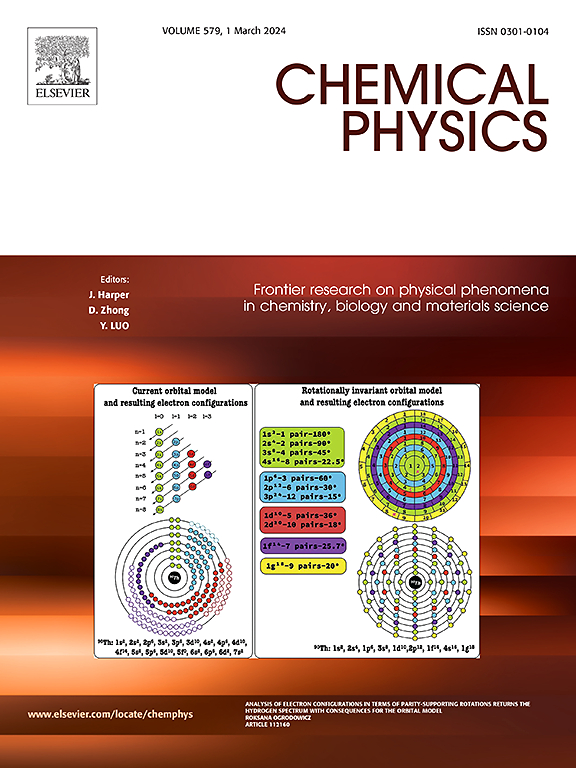The potential application of zinc oxide nanotubes as sensors for NH3 detection: A DFT study
IF 2
3区 化学
Q4 CHEMISTRY, PHYSICAL
引用次数: 0
Abstract
In recent years, nanostructured materials have played a key role in eliminating organic solvents from diverse mediums in various fields such as the fabrication of nano-adsorbents with high versatility. The dispersion corrected DFT approach was adopted within the current study to investigate the adhesion of NH3 onto the pure ZnO nanotube (P-ZnONT) and Si-doped ZnONT (Si-ZnONT) since this approach is one of the powerful tools used to explore the nature of interactions and molecular systems at the atomic level. For this purpose, we investigated the interacting systems optimized geometric parameters as well as the active sites. By performing the ELF analysis and the calculation of charge transport, interaction energies and electronic attributes, the binding properties of interacting species are investigated to assess the capability of P-ZnONT and Si-ZnONT in adsorbing NH3. Moreover, doping the Si atom enhanced the adhesion strength of the nanotubes dramatically. The results showed that SiZnONT was a suitable sensor to detect NH3. The current findings can shed light into designing new nano-sensors as economical tolls for detecting pollutants in freshwater.
氧化锌纳米管作为NH3检测传感器的潜在应用:DFT研究
近年来,纳米结构材料在制备高通用性的纳米吸附剂等领域中发挥了重要作用。本研究采用色散校正DFT方法来研究NH3在纯ZnO纳米管(P-ZnONT)和si掺杂ZnONT (Si-ZnONT)上的粘附,因为这种方法是用于探索原子水平上相互作用和分子系统本质的强大工具之一。为此,我们研究了相互作用体系的优化几何参数和活性位点。通过极低频分析和电荷输运、相互作用能和电子属性的计算,研究了相互作用物质的结合特性,以评价P-ZnONT和Si-ZnONT吸附NH3的能力。此外,硅原子的掺入显著提高了纳米管的粘附强度。结果表明,SiZnONT是检测NH3的合适传感器。目前的发现可以为设计新的纳米传感器提供启示,作为检测淡水污染物的经济工具。
本文章由计算机程序翻译,如有差异,请以英文原文为准。
求助全文
约1分钟内获得全文
求助全文
来源期刊

Chemical Physics
化学-物理:原子、分子和化学物理
CiteScore
4.60
自引率
4.30%
发文量
278
审稿时长
39 days
期刊介绍:
Chemical Physics publishes experimental and theoretical papers on all aspects of chemical physics. In this journal, experiments are related to theory, and in turn theoretical papers are related to present or future experiments. Subjects covered include: spectroscopy and molecular structure, interacting systems, relaxation phenomena, biological systems, materials, fundamental problems in molecular reactivity, molecular quantum theory and statistical mechanics. Computational chemistry studies of routine character are not appropriate for this journal.
 求助内容:
求助内容: 应助结果提醒方式:
应助结果提醒方式:


